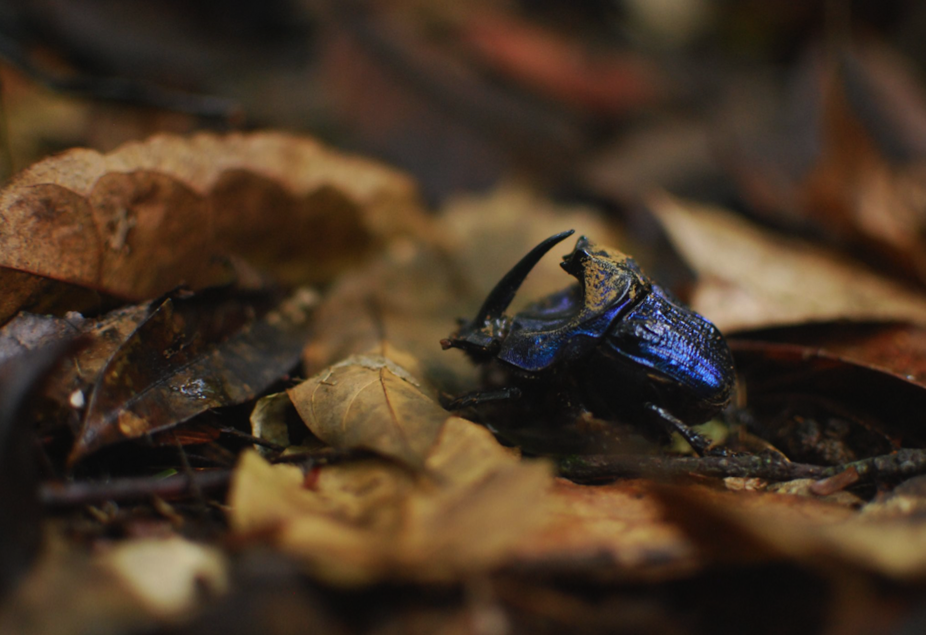The Amazon rainforest holds around 50% of all remaining rainforests on the planet, while hosting more than 400 species of mammal, 1700 species of bird and an unknown number of insect species numbering in the millions. It is also vital for maintaining life on Earth. Amazonian forests mitigate climate change by soaking up around 560 million tons of carbon per year and support agriculture by stimulating rainfall at both local and continental scales.
Amazonian forests and their immense biodiversity are disappearing at an alarming rate, which has been linked to increased livestock production and exports in Brazil. Those forests that still stand are under continual threat from destructive human-caused activities including logging, fires and climatic disturbances such as extreme droughts and floods.
To date, research on climate and biodiversity issues in tropical forests are mostly based on short-term investigations that focus on plant and carbon responses. As a result, most of us are aware of the importance of forest trees for climate regulation. For example, our research in the Amazon found high tree mortality and carbon loss still occurring many years after drought-induced forest fires.
Yet to fully understand the resilience of tropical forests we also need long-term research that considers the impacts of climate disturbances on fauna, and evaluates their role in post-disturbance forest recovery.
Animals are key to understanding the resilience of tropical forests. Birds, for example, are seed dispersers and their loss can drive reductions in seed size of tropical palm trees, making vegetation recovery unlikely or impossible. Similarly, large fruit-eating animals, including howler and spider monkeys, ingest and disperse seeds, so any reduction in their abundance can alter the pathways of forest regeneration.

Even though it has become a commonplace observation that creepy crawlies are the little things that run the world, our understanding of the role of invertebrates is in its infancy. Within tropical forests, termites have been shown to enhance drought resilience, while dung beetles can help rainforests regrow.
Counting fauna
While we know that fauna and their functions are important for understanding forest recovery, it’s not easy to measure them.
Though trees are very diverse and can be hard to identify, they are nonetheless relatively straightforward to monitor; they don’t move, can be measured year to year, their structural and chemical features can be sampled and assessed, and their physiological responses can be evaluated in the ground. Of course, all of this requires hard work in the field, but there is no doubt that our understanding of tropical forest vegetation’s sensitivity to climate has been enabled by its immobile nature.
Animals, on the other hand, are much harder. A single hectare of forest can hold up to 160 species of bird alone, and 100 hectares – an area considerably smaller than Hyde Park in London – can contain up to 245.
Listen to the following avian chorus. How many species can you hear? A specialist could name 12 species in this simple 32-second snippet, but there are very few people in the world with that ability.
It is hard enough to make a snapshot assessment of what species are present, let alone assess changes over time – the species that call at any given moment vary through the year, from day to day, throughout the day, and even with lunar cycles.
What about invertebrates? Most species have not yet even been formally classified by taxonomists, and identification relies on a few specialists with access to comprehensive reference collections. They also vary in abundance throughout the year, from year to year, in response to variations in climate, extreme climatic events, and other factors that are poorly understood.
What are some of the solutions?
Fortunately, some solutions exist to monitor forest fauna. Our project, Bioclimate, is adopting both novel and well-established methods to evaluate how large and small animals can help tropical forests bounce back after disturbances like logging, droughts or fires.
For insects, we can use some groups that indicate the forest health. Dung beetles are ideal as they perform many activities that benefit forests, are easy and cheap to collect, and can represent the impacts of disturbances for other animals whose faeces they use for feeding and nesting.
We can analyse the DNA from the faeces dung beetles eat to assess the mammals that are present in Amazonian forests. This knowledge is useful in helping us understand how environmental change affects dung beetle-mammal relationships.
For birds, using autonomous audio recorders allows us to constantly monitor populations and help us understand the dynamics of occupancy in different locations – many forest birds are rare with large territories and can easily be missed in one-off visits.

Having numerous audio recorders running at the same time for long periods makes it possible to multiply the number of sites and animals monitored at the same time. To overcome humans’ difficulty in hearing multiple bird calls, we are also developing machine-learning algorithms to help identify the vocalisations of certain species.
If we want to secure the future of the Amazon, we need to move from research focused on short-term and species-specific responses toward analysing precisely how the many different insects, birds and other animals that live there contribute to the health of the forest.
Bioclimate will integrate long-term datasets and this new experimental data to advance our understanding of the relationship between biodiversity and climate in tropical forests. With this knowledge, we aim to provide a better picture of how the Amazon responds to human activities, and how we might preserve it in future.

The research project “Bioclimate” is supported by the BNP Paribas Foundation as part of the Climate and Biodiversity Initiative program.


